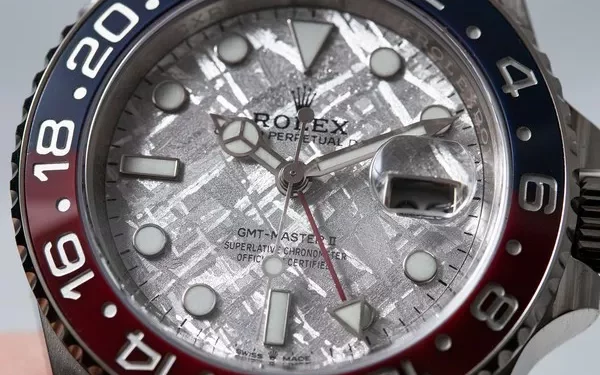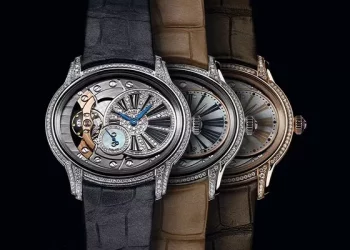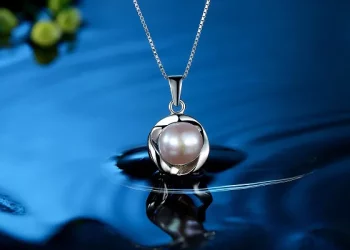Clock escapements are an essential component in the world of horology. They serve as the mechanism that regulates the movement of gears in a clock, ensuring accurate timekeeping. This article delves into the intricate workings of clock escapements, exploring their history, types, and the science behind their operation.
The History of Clock Escapements
The concept of the escapement has been around for centuries, evolving significantly over time. The earliest mechanical clocks, dating back to the 13th century, utilized a simple form of escapement known as the verge escapement. This basic mechanism laid the groundwork for more advanced designs that followed.
The Verge Escapement
The verge escapement was one of the first escapements used in mechanical clocks. It consisted of a crown wheel and a pair of pallets, which alternately engaged and released the teeth of the wheel. This interaction created an oscillating motion, which was transmitted to the clock’s hands through a series of gears. Although the verge escapement was a significant advancement, it had its limitations, including significant friction and wear, which affected accuracy.
The Introduction of the Anchor Escapement
In the 17th century, the anchor escapement was introduced, revolutionizing clockmaking. This design featured an anchor-shaped pallet that interacted with a more refined escape wheel. The anchor escapement reduced friction and wear, leading to improved accuracy and longevity of the clock. It became the standard in most clocks, laying the foundation for modern escapement designs.
The Science Behind Escapements
To understand how a clock escapement works, it’s essential to grasp the basic principles of physics and mechanics that govern its operation. An escapement controls the release of energy from the clock’s power source, typically a wound spring or a suspended weight, to the gear train. This regulated release of energy ensures that the clock’s hands move at a consistent rate.
The Role of the Pendulum or Balance Wheel
At the heart of most escapements is a timekeeping element, such as a pendulum or a balance wheel. The pendulum, introduced by Christiaan Huygens in the 17th century, swings back and forth at a constant frequency. The balance wheel, used in portable timepieces like watches, oscillates in a similar manner. Both elements serve to regulate the movement of the escapement, ensuring a steady transfer of energy.
The Escape Wheel and Pallets
The escape wheel is a crucial component of the escapement, featuring teeth that interact with the pallets. As the escape wheel turns, it engages the pallets, causing them to move back and forth. This motion is transmitted to the timekeeping element, maintaining its oscillation. The interaction between the escape wheel and pallets is precisely calibrated to ensure accurate timekeeping.
The Locking and Releasing Action
The escapement’s operation can be broken down into two primary actions: locking and releasing. When the escape wheel tooth engages a pallet, it “locks” momentarily, preventing further movement. This locking action transfers energy to the timekeeping element, causing it to oscillate. As the timekeeping element reaches the end of its swing, the pallet releases the escape wheel, allowing it to advance to the next tooth. This cyclical locking and releasing action regulate the clock’s movement, ensuring consistent timekeeping.
Types of Escapements
Over the centuries, various types of escapements have been developed, each with its own unique characteristics and advantages. Some of the most notable escapements include:
The Lever Escapement
The lever escapement, invented by Thomas Mudge in the 18th century, is widely used in modern wristwatches. It features a lever with two pallets that interact with the escape wheel. The lever escapement’s design minimizes friction and wear, making it highly reliable and accurate. Its widespread adoption in wristwatches attests to its effectiveness in timekeeping.
The Chronometer Escapement
The chronometer escapement, also known as the detent escapement, is renowned for its precision. It was primarily used in marine chronometers, which required exceptional accuracy for navigation. The detent escapement features a single pallet that interacts with the escape wheel, reducing friction and increasing reliability. Its intricate design and precision make it a hallmark of high-accuracy timepieces.
The Coaxial Escapement
The coaxial escapement, developed by George Daniels in the 20th century, represents a significant advancement in escapement technology. It features a unique design that reduces friction and wear, enhancing the longevity and accuracy of the timepiece. The coaxial escapement’s innovative approach has been widely adopted by luxury watchmakers, cementing its place in modern horology.
The Deadbeat Escapement
The deadbeat escapement, also known as the Graham escapement, was invented by George Graham in the 18th century. It is characterized by its ability to stop the escape wheel completely between each tick, resulting in a “deadbeat” second hand that moves in precise, discrete steps. This design improves accuracy and is often used in precision timepieces, such as observatory clocks.
See Also: How To Adjust a Tissot Leather Watch Band?
The Importance of Precision Engineering
The accuracy of a clock escapement depends on precise engineering and meticulous craftsmanship. Even minor deviations in the shape or positioning of components can significantly impact timekeeping accuracy. As such, clockmakers and watchmakers invest considerable time and effort into perfecting the design and assembly of escapements.
Material Selection
The materials used in the construction of escapements play a crucial role in their performance and durability. High-quality metals, such as hardened steel and alloys, are often used for the escape wheel and pallets to minimize wear and friction. Advances in material science have also led to the use of synthetic rubies and ceramics, further enhancing the longevity and reliability of escapements.
Lubrication
Proper lubrication is essential for the smooth operation of an escapement. Specialized oils are applied to reduce friction between moving parts, ensuring consistent performance. However, excessive lubrication can lead to oil migration and contamination, affecting accuracy. Striking the right balance in lubrication is a delicate art mastered by experienced horologists.
Adjustment and Regulation
Once assembled, escapements require careful adjustment and regulation to achieve optimal performance. This process involves fine-tuning the interaction between the escape wheel and pallets, as well as calibrating the oscillation of the timekeeping element. Skilled watchmakers use specialized tools and techniques to achieve the highest levels of precision, ensuring that the escapement operates flawlessly.
The Role of Escapements in Modern Timekeeping
While electronic and quartz timepieces have largely supplanted mechanical clocks and watches in everyday use, the escapement remains a symbol of horological excellence. Mechanical watches, in particular, continue to be prized for their craftsmanship, complexity, and aesthetic appeal. The escapement, as the heart of these timepieces, represents the pinnacle of traditional watchmaking.
Mechanical Watches
Mechanical watches, powered by mainsprings and regulated by escapements, are celebrated for their artistry and engineering. Collectors and enthusiasts value the intricate movements and the skill required to create and maintain them. The escapement’s role in ensuring precise timekeeping adds to the allure and prestige of mechanical watches.
High-Precision Clocks
In addition to watches, escapements are used in high-precision clocks, such as observatory clocks and marine chronometers. These timepieces serve critical functions in scientific research, navigation, and other fields requiring exceptional accuracy. The continued use of escapements in these applications underscores their enduring significance in the realm of precision timekeeping.
The Future of Escapements
As technology advances, the role of mechanical escapements in everyday timekeeping may continue to diminish. However, their legacy and importance in the history of horology will endure. Innovations in materials, manufacturing techniques, and design will likely lead to new developments in escapement technology, ensuring that these remarkable mechanisms remain at the forefront of watchmaking excellence.
Conclusion
The clock escapement is a marvel of engineering and craftsmanship, embodying centuries of horological innovation. From the early verge escapement to modern coaxial designs, escapements have played a crucial role in the development of accurate and reliable timepieces. Understanding how a clock escapement works provides insight into the intricate mechanisms that regulate the passage of time, highlighting the artistry and precision that define the world of horology. As we continue to appreciate and advance these remarkable mechanisms, the escapement remains a testament to human ingenuity and the quest for precise timekeeping.
Related Topics:





























